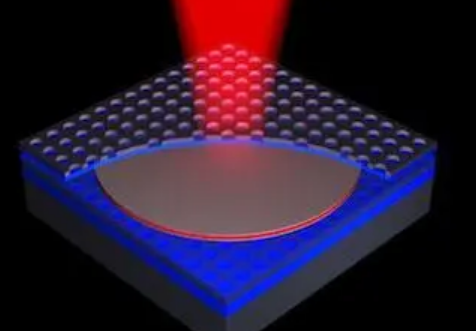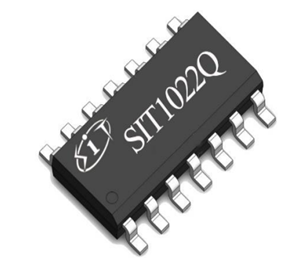What is a silicon controlled rectifier and its types
The advent of electronic devices and power control systems has revolutionized various industries. One crucial component that plays a significant role in these systems is the Silicon Controlled Rectifier.

Silicon Controlled Rectifiers are vital components in electronic devices and power control systems. It allows current to flow in only one direction while providing control over the power output. It consists of three layers of semiconducting material, forming a P-N-P-N structure. This article will be exploring their types, applications, and working principle. Understanding SCRs is crucial for comprehending their significance in modern technology.
What is a silicon controlled rectifier and its typesA Silicon Controlled Rectifier is an electronic component based on thyristors (power electronic power devices) and designed to allow current flow in only one direction while controlling the power output.
It comprises three layers of semiconducting material: two P-type layers sandwiching an N-type layer or vice versa, creating a P-N-P-N structure. SCRs are available in various types, each with unique characteristics and applications.
Some common types include phase-controlled SCRs, light-activated SCRs (also known as LASCRs), and gate turn-off SCRs (GTOs). Phase-controlled are widely used in power control applications, while LASCRs are primarily used in light-sensitive circuits. GTOs provide additional control features, allowing the device to be turned off by a gate signal. Understanding the different types helps in selecting the appropriate device for specific applications.
What is the main purpose of SCRThe primary function of a Silicon Controlled Rectifier is to convert alternating current (AC) to direct current (DC), controllable rectification and voltage stabilization, and can be used as a contactless switch in automation equipment, as well as play the role of switching and voltage regulation, that is, it can be used in AC circuits to adjust the output voltage.
It act as efficient rectifiers by allowing current flow during specific portions of the AC waveform. This controlled rectification process enables the regulation of voltage and current levels in various electronic systems. By controlling the timing and duration of the current flow, SCRs can precisely manage the power output. This makes them crucial components in power control systems, where stable and controlled DC power is required. It find extensive applications in industries such as power electronics, industrial automation, and consumer electronics. They are commonly used in motor drives, heating systems, lighting control, power supplies, and more. The ability is to convert AC to DC with high efficiency and accuracy makes them indispensable in modern technology.
What are the applications of silicon controlled rectifiersSilicon Controlled Rectifiers have diverse applications across a wide range of industries. Their ability to control power flow and handle high currents makes them invaluable in various electronic systems.
They are commonly used in power electronics, industrial automation, and consumer electronics. They find extensive applications in motor drives, where they control the speed and torque of electric motors.
They are also utilized in heating systems, such as electric furnaces and electric water heaters, to precisely regulate temperature. In lighting control, it is employed in dimmers to adjust the brightness of light sources.
Additionally, it plays a significant role in power supplies, battery chargers, and voltage regulators. With the increasing demand for electric vehicles and renewable energy systems, it is used in electric vehicle charging stations and solar power inverters. The wide-ranging applications showcase their versatility and importance in modern technology-driven industries.
How does a SCR controller workAn SCR controller operates by controlling the triggering to switch between on and off states. When a control signal exceeds a specific threshold voltage, it triggers the gate of the SCR, allowing current to flow through the device. It remains in the conducting state until the current drops below a specified level or a reverse voltage is applied across it. This working principle enables precise control over the power flow in a circuit. By adjusting the timing and duration of the control signal, it can regulate the amount of power delivered to the load.
They are widely used in applications that require accurate and efficient power control, such as motor speed control, heating systems, and voltage regulation. The ability is to rapidly switch on and off with high precision makes them indispensable in various electronic systems.
在线留言询价
- 一周热料
- 紧缺物料秒杀
| 型号 | 品牌 | 询价 |
|---|---|---|
| TL431ACLPR | Texas Instruments | |
| RB751G-40T2R | ROHM Semiconductor | |
| CDZVT2R20B | ROHM Semiconductor | |
| MC33074DR2G | onsemi | |
| BD71847AMWV-E2 | ROHM Semiconductor |
| 型号 | 品牌 | 抢购 |
|---|---|---|
| ESR03EZPJ151 | ROHM Semiconductor | |
| BP3621 | ROHM Semiconductor | |
| TPS63050YFFR | Texas Instruments | |
| STM32F429IGT6 | STMicroelectronics | |
| IPZ40N04S5L4R8ATMA1 | Infineon Technologies | |
| BU33JA2MNVX-CTL | ROHM Semiconductor |
- 周排行榜
- 月排行榜
AMEYA360公众号二维码
识别二维码,即可关注


请输入下方图片中的验证码:


























